Ingredient Spotlight: How Fats are Used in Baking
I’m highlighting common baking ingredients in an attempt to learn more about the science of baking and the role each ingredient plays in the bigger picture. See more on my Baking Essentials page. A quick disclaimer: I’m just a gal with a library card and a desire to learn. If you have any insights you’d like to share, please leave a comment!
The next ingredient I want to talk about is butter, which is perhaps my most favorite. Who doesn’t love butter? But while doing some reading I realized that it probably would be better to take a step back and talk about all fats used in baking– butter, shortening, oils, and lard. Let’s jump in!
What are fats?
I’m going to get a little bit nerdy for a moment and talk about fatty acids. A fatty acid is a long carbon chain that interacts with hydrogen atoms differently and can be saturated, polyunsaturated, and monounsaturated based on this relationship. Three of these fatty acid chains together form a triglyceride.
Why is this important? Because different types of triclygerides behave differently in baking. Triglycerides high in saturated fat tend to come from animals and are solid at room temperature, like butter or lard. Triglycerides high in unsaturated fats usually come from plants and are liquid at room temperature, like vegetable oil.
Vegetable shortening is solid at room temperature because it goes through a process called hydrogenation where hydrogen is forced to bond with the carbon chain in a way that mimics a saturated fatty acid. You’ve surely heard the term “trans fat”, and that refers to the synthetic compound that results from fatty acids that go through this process.
How and why fats are used in baking
Fats have four main purposes in baking:
- They tenderize the product by coating and weakening the gluten bonds within the structure.
- Even though they contain little or no moisture, they provide the illusion of wetness. Fats don’t evaporate or become absorbed with heat like water does.
- They enable browning.
- They help move heat through the product, perpetuating the baking process.
Variations
Now that we’ve got a bit more of an understanding of what fats do, let’s talk about the different kinds we use.
Butter
Butter in the US contains approximately 80% butterfat, in Europe it’s roughly 85%. Water makes up most of the rest and its presence can be both a good and bad thing. It turns to steam during baking which assists in leavening, but it also adds additional moisture that can affect the overall structure. Water can also cause the butter to go rancid, so salt can be added as a preservative.
Butter is used for its superior flavor over other fats. We can all tell the difference between a homemade cookie baked with butter and one from the grocery bakery made with shortening, right? Butter also has a melting point just below body temperature (90-95 degrees F) and so it melts nicely in the mouth. Butter has a narrow plasticity, however, and is best when at room temperature (65-70 degrees F). I usually let it sit out on the counter 30 minutes before I need to use it and it’s just right.
Butter is used in baked goods in three typical ways. It can be cut into the dry ingredients, as with biscuits and pie crust. It can be creamed with sugars in things like cakes and cookies. And it can also be melted and combined with other ingredients. One interesting thing to note about butter is that it is the same whether weighed or measured by volume. One liquid ounce of butter is the same as one ounce of butter.
Shortening
Shortening was invented in the early 1900s and got its name because fats shorten the gluten bonds by lubricating them and weakening the structure. Shortening is useful in baking because it remains plastic at a much wider temperature and contain emulsifiers that help batters come together faster. It’s also 100% fat, unlike butter. These reasons, as well as the fact that it does not need to be refrigerated and is much cheaper than butter, are why it has been so popular.
It’s fallen out of favor in recent years partly because hydrogenated fats are believed to be worse for you than other natural fats. Shortening also doesn’t have a great flavor, and because it has a higher melting point it doesn’t have a pleasant mouth feel (think of the coating in the back of your throat after you’ve had a piece of store-bought frosted cake).
Margarine is similar to shortening in that it’s made from hydrogenated vegetable oil, but it has had milk products (usually skim milk) added as well so that it’s a more suitable butter substitute. While shortening does have a place in baking, margarine is a product I never use.
Oils
Oil is completely fat, it contains no proteins, solids, water, or air. It doesn’t have the capability of trapping air bubbles, so the creaming method doesn’t work. And because there is no water, oil doesn’t produce steam and help with leavening. But oil does create very moist baked goods because oils are naturally liquid at room temperature. Some of most moist cakes I’ve had have been baked with vegetable oil.
Examples of vegetable oils include soybean, peanut, cottonseed, corn, canola, etc. Each have slightly different properties, but I use basic canola or a canola blended oil for baking.
Lard
Up until about 100 years ago lard, which is fat from a pig, was perhaps the most popular fat used in the kitchen. In baking it’s used much like butter. Although the invention of shortening made lard an outcast, its slowly making its way back into kitchens and recipes.
Storage
Butter should be stored in the refrigerator, but if keeping for more than a few weeks, tightly wrap it and place in the freezer. It will stay good there for up to 6 months.
Shortening and oil can also go rancid if exposed to light and air. Cover and store in cool, dark place and try to use them within a few months of purchase.
A lot of people try to make recipes healthier by substituting the fats with something else. Applesauce, for example, is a common substitute in baked goods like cakes and cookies. Feel free to try substitutes like this, and best of luck to you. But since I generally don’t do substitutions, I don’t have enough experience to advise you on them.
I’m a butter gal all the way, I don’t usually use anything else. And now I know more than I ever wanted to know about what it’s doing in my baked goods.
Any questions? Leave comment and I’ll do my best to find an answer!

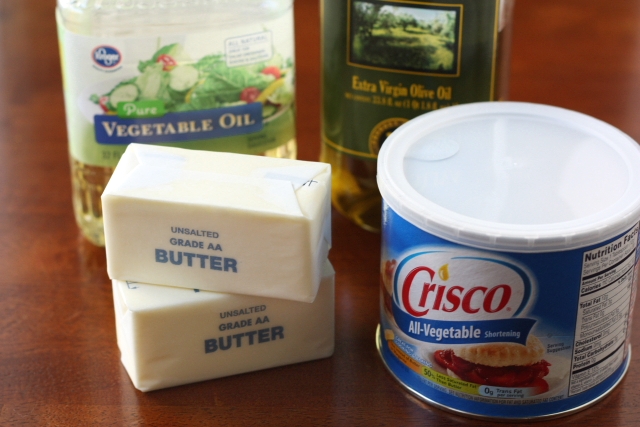

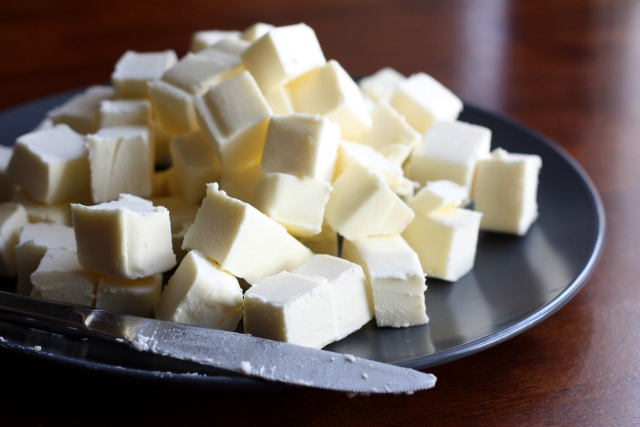
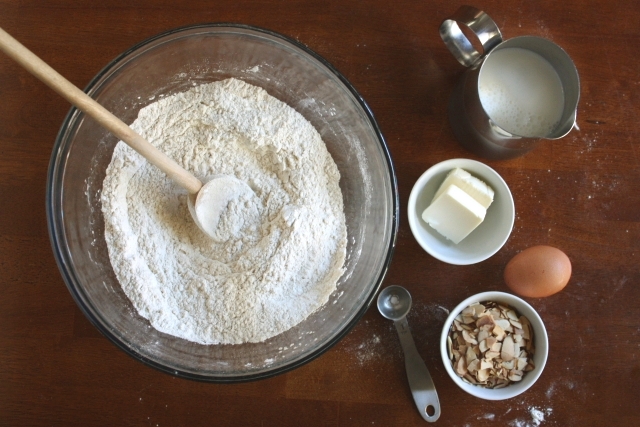
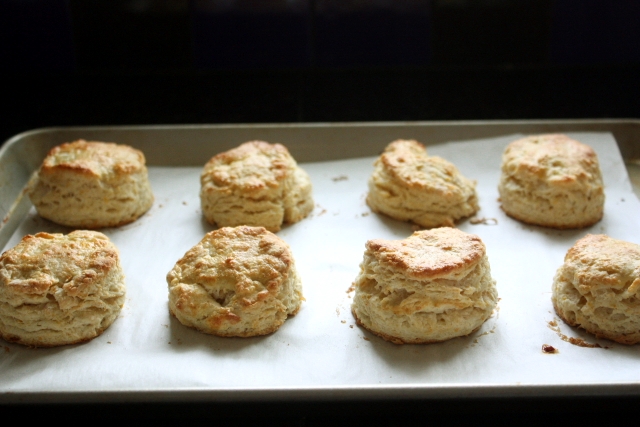
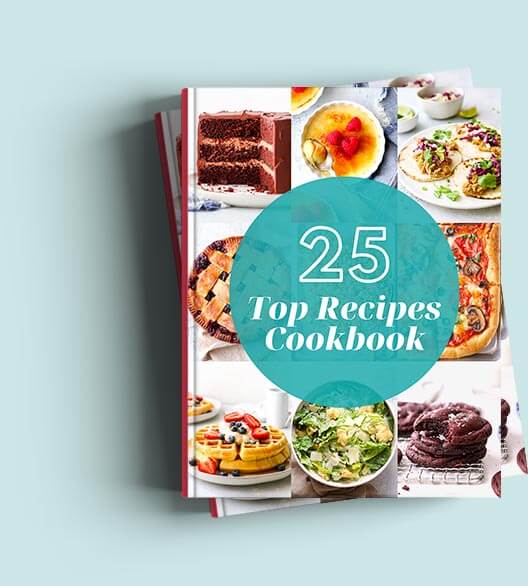
My Hubby just asked a question that you did not address here. What exactly is a butter/canola oil blend and can it be used just as plain butter would? Thank you for this primer; definitely explained all.
Patricia, thank you for your comment!
A blended butter with canola or another oil is exactly what it sounds like. Butter is blended with an oil so that it will stay spreadable cold and straight out of the fridge. You can get away with using it interchangeably in cooking, but I wouldn’t use it as a substitute for butter in baking without making some adjustments.
It´s funny,
last weekend I watched the film “The Help”. It´s just comming up in Germany. And I remember a woman saying: Crisco is the one for everything! For skin, for baking, for noisy doors 🙂
Your blog is so great! I love looking around and beeing inspired:-)
Thanks a lot!
Thanks for this informational post ~ I was planning on writing a post on this very topic when someone asked me about using butter/margarine/oil/shortening interchangeably. I’ll definitely include a link to your post when I get it up!
Two things that can’t be separated from Indonesia cooking: Shortening and butter. We use shortening a lot for cooking- stir fry + rice, and butter for bread and bakery. I am not sure about lard…I have barely heard lard…though my professor mentioned about lard that used for cooking oil way back in the 60’s
On thing that is super guilty pleasure: Valveeta Cheese……
When making chocolate chip cookies, I like to use half butter (for flavor) and half crisco. I think it keeps my cookies from falling flat – a problem I had before the blend. I also have another secret ingredient – a box of vanilla pudding!
Thanks for all the information. I like to find out about the whys of baking and ingredients. I just wish someone could draw me a picture of these gluten bonds and whatnot! I’m more of a visual learner 🙂
I’ve often used half butter, half shortening for cookies as it definitely helps keep their lovely shape. I’ve never tried vanilla pudding though, may have to look into that.
About pudding mix in chocolate chip cookies. What, besides sugar and a thickener, would it add, resulting in a “cakey” texture? And, I must share my lard story. I was raised on the stuff in the ’50s and ’60’s by a Puerto Rican mother so not a pot of rice or pan of beans simmered on our stove without spoonfuls of lard and tiny bits of fried fatback for flavor. It was delicious, but we gave it up years ago for the sake of the scale and our arteries. Still, there is nothing like the flavor of a baking powder biscuit made with lard. Love ur blog.
Since I haven’t used pudding mixes in my own baking, I couldn’t say what the affects are. Perhaps another reader can provide an answer? I’ve heard older family members talk about growing up with lard, it’s just so interesting that no one uses it now.
can u olso gv information on why eggs are used?
what about coconut oil??? it is awesome!!!! a mid chain fat that is solid a room temp, unless you live with no ac in the summer!.. works great in baking..
i have used it cakes and shortbread cookies… yum yum…. even fondant…
Hi Annalise,
I’m somewhat new to baking and have a question about fats. For Easter I would like to make a carrot layer cake, A lot of the recipes I have found use canola oil. I would really like to sub that with butter and use the creaming method. I have done this in bundt cakes and cupcakes before and it was successful. However, this is my first layer cake and it requires a bit more fat than in the bundt/cupcakes recipes. I was wondering if the cake might be too dense if I sub the oil for butter.
Thanks!
Hi Lauren, thanks for the comment! It’s hard to know for sure what the end product will be without looking at the recipe and trying it myself. I think you are okay to go ahead and sub all butter for the oil. If you’re worried about it being too dense, you could leave out a few tablespoons. Good luck!
I’m loving your baking essential posts! I’m a beginner at baking and I was starting to get really curious about what each ingredient was doing to my cupcakes!! Thank you so much!
It is funny and interesting
it seems like if you read and note down things that you see on your method of making cookie or whatever recipes in and it helps us a lots to find more ways to develop ourselves to profited us in the fuure
What other functions does fat have in cakes?
Hello, I’m looking around for recipes for Pie crust using Fat from the karakul sheep tail that I’ve rendered . Is it to strong a taste for pie crust? My Lebanese husband says its wonderful for rice.
I’m sorry, I don’t have any experience baking with that kind of fat. Here is the pie crust recipe that I always use: http://www.completelydelicious.com/2014/11/how-to-make-perfectly-flaky-pie-crust.html.
I’v been a butter fan for many years now.But recently I discovered that oil is pretty good and I use it it for most of my recipes and they turn out exceptionally well as desired.
Meanwhile thanks for your note. It was helpful
In regards to butter, you can store in a butter bell, it won’t get rancid and you will have butter ready to use
nice looking sites and great work. Pretty nice information. it has a better understanding. thanks for spending time on it.
indian grocery dallas tx
Hi – I have a chemistry question. It relates further to what happens to fats in baking.
Vegetable oils consist mostly of triglyceride. Hydrolysis (reaction with water) is the breaking off of one or all three fatty acid (chain like) molecules from the backbone of the triglyceride molecule. Do you know if hydolysis is the fate of most triglyceride in baking or not?! Many thanks.